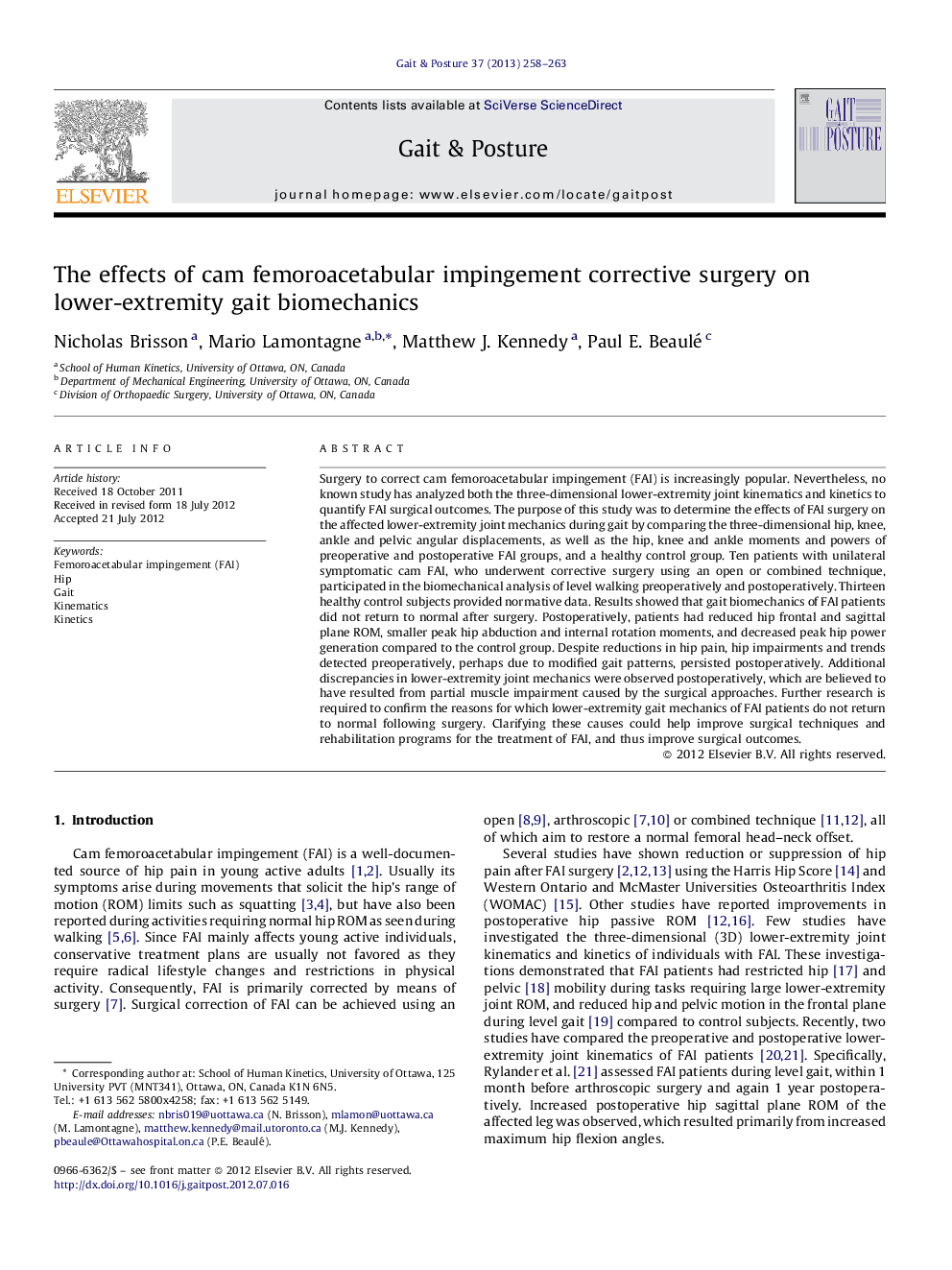| Article ID | Journal | Published Year | Pages | File Type |
|---|---|---|---|---|
| 6207951 | Gait & Posture | 2013 | 6 Pages |
Surgery to correct cam femoroacetabular impingement (FAI) is increasingly popular. Nevertheless, no known study has analyzed both the three-dimensional lower-extremity joint kinematics and kinetics to quantify FAI surgical outcomes. The purpose of this study was to determine the effects of FAI surgery on the affected lower-extremity joint mechanics during gait by comparing the three-dimensional hip, knee, ankle and pelvic angular displacements, as well as the hip, knee and ankle moments and powers of preoperative and postoperative FAI groups, and a healthy control group. Ten patients with unilateral symptomatic cam FAI, who underwent corrective surgery using an open or combined technique, participated in the biomechanical analysis of level walking preoperatively and postoperatively. Thirteen healthy control subjects provided normative data. Results showed that gait biomechanics of FAI patients did not return to normal after surgery. Postoperatively, patients had reduced hip frontal and sagittal plane ROM, smaller peak hip abduction and internal rotation moments, and decreased peak hip power generation compared to the control group. Despite reductions in hip pain, hip impairments and trends detected preoperatively, perhaps due to modified gait patterns, persisted postoperatively. Additional discrepancies in lower-extremity joint mechanics were observed postoperatively, which are believed to have resulted from partial muscle impairment caused by the surgical approaches. Further research is required to confirm the reasons for which lower-extremity gait mechanics of FAI patients do not return to normal following surgery. Clarifying these causes could help improve surgical techniques and rehabilitation programs for the treatment of FAI, and thus improve surgical outcomes.
⺠We compare gait biomechanics of pre- and post-surgery cam FAI patients, and controls. ⺠Despite significant hip pain reduction, normal gait is not restored after surgery. ⺠Post-surgery patients display reduced hip frontal and sagittal plane range of motion. ⺠Post-surgery patients have reduced peak hip abduction and internal rotation moments. ⺠Modified gait patterns and muscle impairment may explain post-surgery discrepancies.
